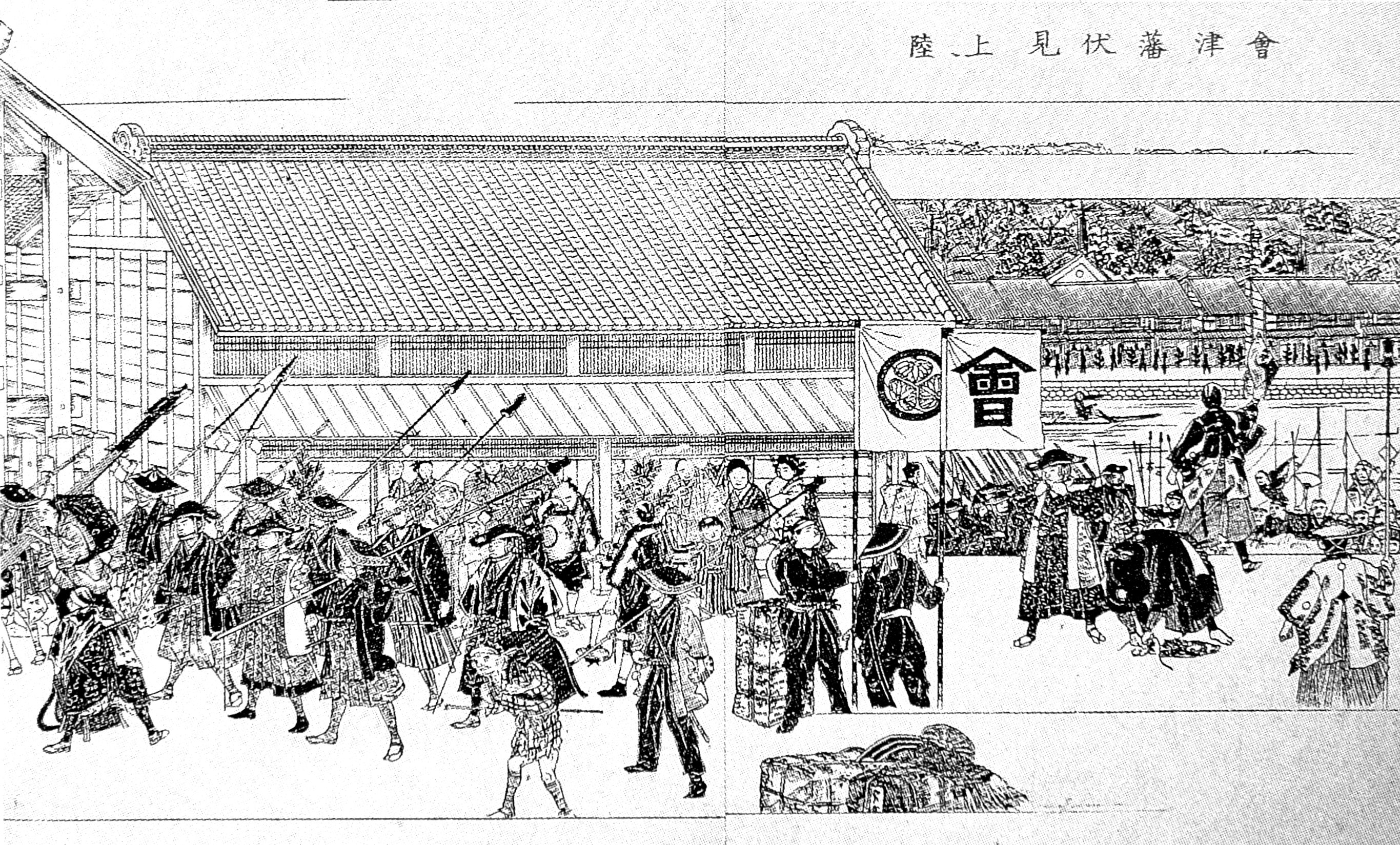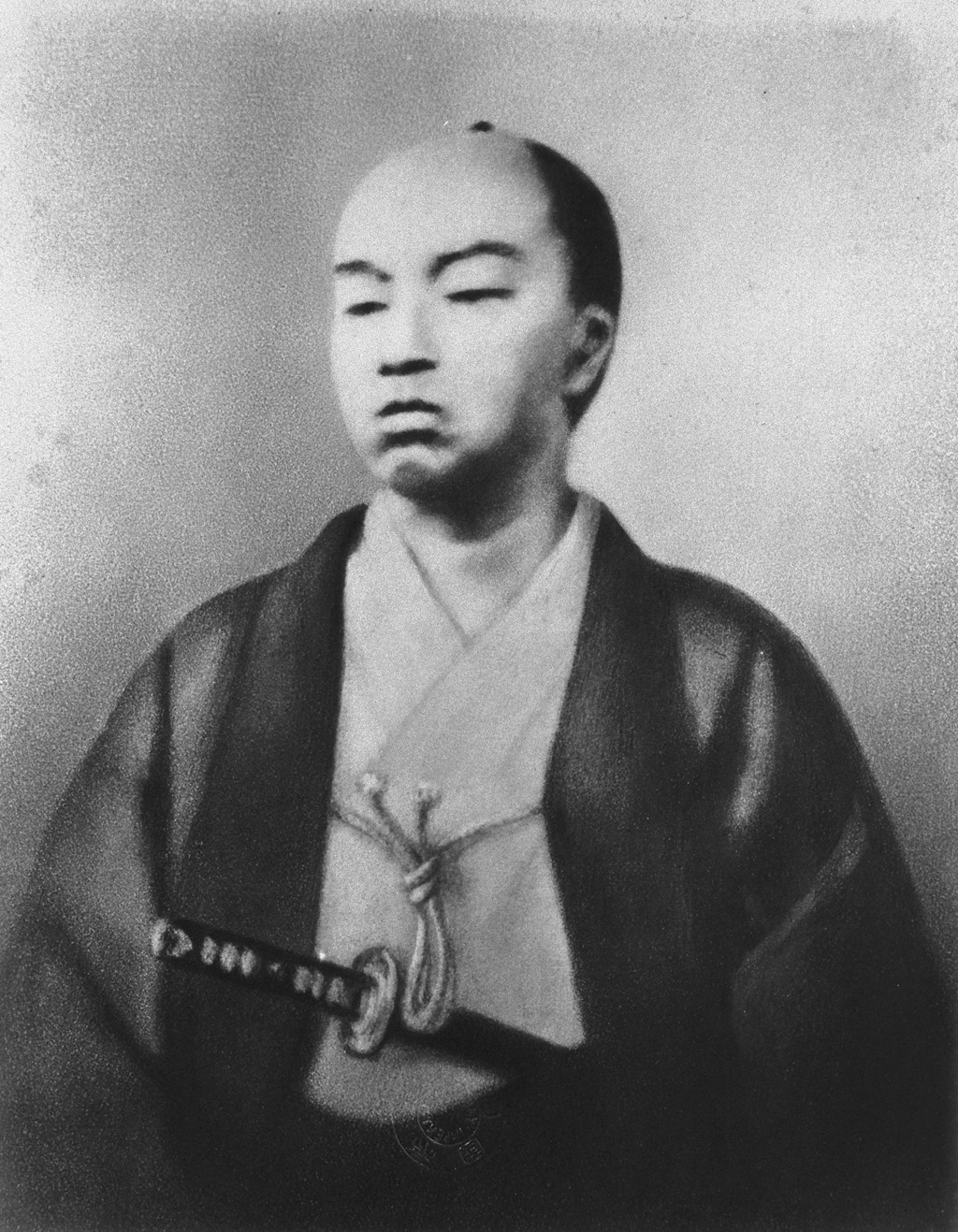|
Maki Yasuomi
was a Japanese samurai of the late Edo period, who served as a retainer of the Arima clan of Kurume Domain, Kurume in northern Kyūshū. He was also a Shinto priest of the Kurume Suitengū, Suitengū shrine in Kurume. Maki, also known by his court title of or simply , was a student of the Mito school's ''sonnō-jōi'' ideology, and in particular, Aizawa Seishisai's philosophy. Maki took part in the Kinmon Incident of 1864 and committed suicide near Osaka with his men, after being chased and surrounded by Aizu Domain, Aizu and Shinsengumi troops. Early life Maki was born in Kurume Domain, Kurume in 1813, to Maki Toshiomi, the family head of the hereditary line of Shinto priests who cared for the Suitengū shrine. It was during Maki's childhood that his father was made a full-fledged samurai by Arima Yorinori, the lord of Kurume.Calman, p. 81. When Maki was eleven, his father died, leaving him in charge of the family as well as the shrine. Intellectual and political career Combin ... [...More Info...] [...Related Items...] OR: [Wikipedia] [Google] [Baidu] |
Kurume Suitengū
is a Shinto Shinto shrine, shrine located in Kurume, Fukuoka, Kurume, Fukuoka prefecture, Japan. This shrine is the headquarters for all Suitengū Shrines in Japan. It is dedicated to four deities: * Ame-no-Minakanushi, Amenominakanushi * Emperor Antoku, Antoku * Taira no Tokuko, Kenrenmon-in * Taira no Tokiko, Nii No Ama "Suiten" is the Japan, Japanese name of the deity of Hindu origins Varuna, one of a series of Hindu deities whose worship entered Japan together with Buddhism.. When the Japanese Empire enforced the ''Shinbutsu bunri'', the official separation of Shinto shrines and Buddhist temples, shrines celebrating Suiten identified their dedication to Amenominakanushi. Legends As a shrine related with water, Suitengū came to be venerated as a guardian shrine for Ship transport, marine traffic and was said to have a connection with the legend of Kappa (folklore), Kappa. These days, it is believed to house the Kami, god of safe childbirth. Beppyo shrines See also *Suijin ... [...More Info...] [...Related Items...] OR: [Wikipedia] [Google] [Baidu] |
Aizu Domain
was a domain of the Tokugawa Shogunate of Japan during the Edo period from 1601 to 1871.Ravina, Mark. (1998) ''Land and Lordship in Early Modern Japan,'' p. 222 The Aizu Domain was based at Tsuruga Castle in Mutsu Province, the core of the modern city of Aizuwakamatsu, located in the Tōhoku region of the island of Honshu. The Aizu Domain was ruled for most of its existence by the '' shinpan'' ''daimyō'' of the Aizu-Matsudaira clan, a local cadet branch of the ruling Tokugawa clan, but was briefly ruled by the '' tozama'' ''daimyō'' of the Gamō and Katō clans. The Aizu Domain was assessed under the '' Kokudaka'' system with a peak value of 919,000 '' koku'', but this was reduced to 230,000 ''koku''. The Aizu Domain was dissolved in the abolition of the ''han'' system in 1871 by the Meiji government and its territory was absorbed into Fukushima Prefecture, covering much of the traditional region of Aizu. History Pre-Edo period The area of Kurokawa, later called "Waka ... [...More Info...] [...Related Items...] OR: [Wikipedia] [Google] [Baidu] |
Hayashi Yasusada
was a Japanese samurai of the late Edo period. Also known by his formal name (), , A retainer of the Aizu domain, Gonsuke was an accomplished martial artist of Ichinomiya ryu iaijutsu, Naganuma ryu strategy, and gunnery. Promoted to in 1862, he went to Kyoto at the start of Lord Matsudaira Katamori's tenure as Kyoto Shugoshoku. Fighting at the various skirmishes in the 1860s, he most notably fought alongside Shinsengumi against Maki Izumi's force at Tennozan. Commanding Aizu artillery forces at the Battle of Toba–Fushimi, Gonsuke fought against overwhelming odds, coming under heavy fire while inadequately supported by spearmen instead of rifle infantry. Grabbing a long spear, he charged the enemy infantry but was shot repeatedly. Evacuated from the battlefield, he was placed on a Shogunate warship, and died at sea, en route to Edo. His age at death was 63. Gonsuke's ancestor Matazaburō was famous for having served under Torii Mototada was a Japanese Samurai and Daimyo ... [...More Info...] [...Related Items...] OR: [Wikipedia] [Google] [Baidu] |
Kyoto
Kyoto (; Japanese: , ''Kyōto'' ), officially , is the capital city of Kyoto Prefecture in Japan. Located in the Kansai region on the island of Honshu, Kyoto forms a part of the Keihanshin metropolitan area along with Osaka and Kobe. , the city had a population of 1.46 million. The city is the cultural anchor of a substantially larger metropolitan area known as Greater Kyoto, a metropolitan statistical area (MSA) home to a census-estimated 3.8 million people. Kyoto is one of the oldest municipalities in Japan, having been chosen in 794 as the new seat of Japan's imperial court by Emperor Kanmu. The original city, named Heian-kyō, was arranged in accordance with traditional Chinese feng shui following the model of the ancient Chinese capital of Chang'an/Luoyang. The emperors of Japan ruled from Kyoto in the following eleven centuries until 1869. It was the scene of several key events of the Muromachi period, Sengoku period, and the Boshin War, such as the Ōnin War, the Ho ... [...More Info...] [...Related Items...] OR: [Wikipedia] [Google] [Baidu] |
Chōshū Domain
The , also known as the , was a domain (''han'') of the Tokugawa Shogunate of Japan during the Edo period from 1600 to 1871.Deal, William E. (2005) ''Handbook to Life in Medieval and Early Modern Japan,'' p. 81 The Chōshū Domain was based at Hagi Castle in Nagato Province, in the modern city of Hagi, located in the Chūgoku region of the island of Honshu. The Chōshū Domain was ruled for its existence by the '' tozama'' ''daimyō'' of the Mōri, whose branches also ruled the neighboring Chōfu and Kiyosue domains, and was assessed under the '' Kokudaka'' system with peak value of 369,000 '' koku''. The Chōshū Domain was the most prominent anti-Tokugawa domain and formed the Satchō Alliance with the rival Satsuma Domain during the Meiji Restoration, becoming instrumental in the establishment of the Empire of Japan and the Meiji oligarchy. The Chōshū Domain was dissolved in the abolition of the han system in 1871 by the Meiji government and its territory was abso ... [...More Info...] [...Related Items...] OR: [Wikipedia] [Google] [Baidu] |
Shimazu Hisamitsu
Prince , also known as , was a Japanese samurai were the hereditary military nobility and officer caste of medieval and early-modern Japan from the late 12th century until their abolition in 1876. They were the well-paid retainers of the '' daimyo'' (the great feudal landholders). They h ... of the late Edo period. Hisamitsu was virtual Super Potentate of Satsuma Domain. The younger brother of Shimazu Nariakira, Hisamitsu served as regent for his underage son Shimazu Tadayoshi (2nd), Tadayoshi, who became the 12th and last of the Satsuma Domain. Hisamitsu was instrumental in the efforts of the southern Satsuma, Chōshū Domain, Chōshū, and Tosa Domain, Tosa clans to bring down the Tokugawa Shogunate. He held the court title of . Biography Hisamitsu was born in Kagoshima Castle in 1817, the son of Shimazu Narioki, the 10th ''daimyō''; Hisamitsu's name at birth was Kanenoshin; his mother was Yura, Narioki's concubine. He was briefly adopted by the Tanegashima clan as an ... [...More Info...] [...Related Items...] OR: [Wikipedia] [Google] [Baidu] |
Satsuma Domain
The , briefly known as the , was a domain (''han'') of the Tokugawa shogunate of Japan during the Edo period from 1602 to 1871. The Satsuma Domain was based at Kagoshima Castle in Satsuma Province, the core of the modern city of Kagoshima, located in the south of the island of Kyushu. The Satsuma Domain was ruled for its existence by the '' Tozama'' ''daimyō'' of the Shimazu clan, who had ruled the Kagoshima area since the 1200s, and covered territory in the provinces of Satsuma, Ōsumi and Hyūga. The Satsuma Domain was assessed under the '' Kokudaka'' system and its value peaked at 770,000 '' koku'', the second-highest domain in Japan after the Kaga Domain. Totman, Conrad. (1993) ''Early Modern Japan'', p. 119 The Satsuma Domain was one of the most powerful and prominent of Japan's domains during the Edo period, conquering the Ryukyu Kingdom as a vassal state after the invasion of Ryukyu in 1609, and clashing with the British during the bombardment of Kagoshima in 186 ... [...More Info...] [...Related Items...] OR: [Wikipedia] [Google] [Baidu] |
Okubo Toshimichi
, also Okubo, Ohkubo and Ookubo, is a Japanese surname. Notable people with the surname include: *Ōkubo clan **Ōkubo Tadayo (1532–1594), Japanese daimyō of the Sengoku period **Ōkubo Tadasuke (1537–1613), Japanese daimyō of the Sengoku and Edo periods **Ōkubo Nagayasu (1545–1613), Japanese samurai of the Edo period **Ōkubo Tadachika (1553–1628), Japanese daimyō of the Sengoku and Edo periods ** Ōkubo Tadataka (1560–1639), Japanese samurai of the Sengoku and Edo periods **Ōkubo Tadazane (1778–1837), Japanese daimyō of the late Edo period **Ōkubo Toshimichi (1830–1878), Japanese samurai and later leader of the Meiji restoration ;Contemporary *Atsushi Ōkubo, Japanese manga author *Benji Okubo, American artist * Hiroshi Okubo, Japanese video game music composer *James K. Okubo, American Medal of Honor recipient *Ōkubo Haruno, Japanese general * Hideo Ohkubo, Japanese businessman *, Japanese cyclist *, Japanese Nordic combined skier *Kayoko Okubo, Japanese co ... [...More Info...] [...Related Items...] OR: [Wikipedia] [Google] [Baidu] |
Tenpō Era
was a after ''Bunsei'' and before ''Kōka.'' The period spanned from December 1830 through December 1844. The reigning emperor was . Introduction Change of era * December 10, 1830 () : In the 13th year of ''Bunsei'', the new era name of ''Tenpō'' (meaning "Heavenly Imperial Protection") was created to mark the disasters of a great fire in Edo and an earthquake at Kyoto. The new era name was created from an hortatory aphorism: "Respect and worship the Ways of heaven. Eternally keep the Mandate of Heaven" (欽崇天道、永保天命). The Tenpō era is often described as the beginning of the end of bakufu government. Though the era accomplished much through its reforms, and also culturally speaking, the injury inflicted on the Tokugawa system of government during the Tenpō period was unparalleled. Public order and dissatisfaction with government was a main issue, but the bakufu was not entirely at fault for the stir amongst the people. For example, the failure of crops i ... [...More Info...] [...Related Items...] OR: [Wikipedia] [Google] [Baidu] |
Mitogaku
refers to a school of Japanese historical and Shinto studies that arose in the Mito Domain (modern-day Ibaraki Prefecture). Early The school had its genesis in 1657 when Tokugawa Mitsukuni (1628–1700), second head of the Mito Domain, commissioned the compilation of the ''Dai Nihonshi''. Among scholars gathered for the project were Asaka Tanpaku (1656–1737), Sassa Munekiyo (1640–1698), Kuriyama Senpō (1671–1706), and Miyake Kanran (1673–1718). The fundamental approach of the project was Neo-Confucianist, based on the view that historical development followed moral laws. Tokugawa Mitsukuni believed that Japan, as a nation that had long been under the unified rule of the emperor, was a perfect exemplar of a "nation" as understood in Sinocentric thought. The ''Dai Nihon-shi'' thus became a history of Japan as ruled by the emperors and emphasised respect for the imperial court and Shinto deities. In order to record historical facts, the school's historians gathered local ... [...More Info...] [...Related Items...] OR: [Wikipedia] [Google] [Baidu] |





